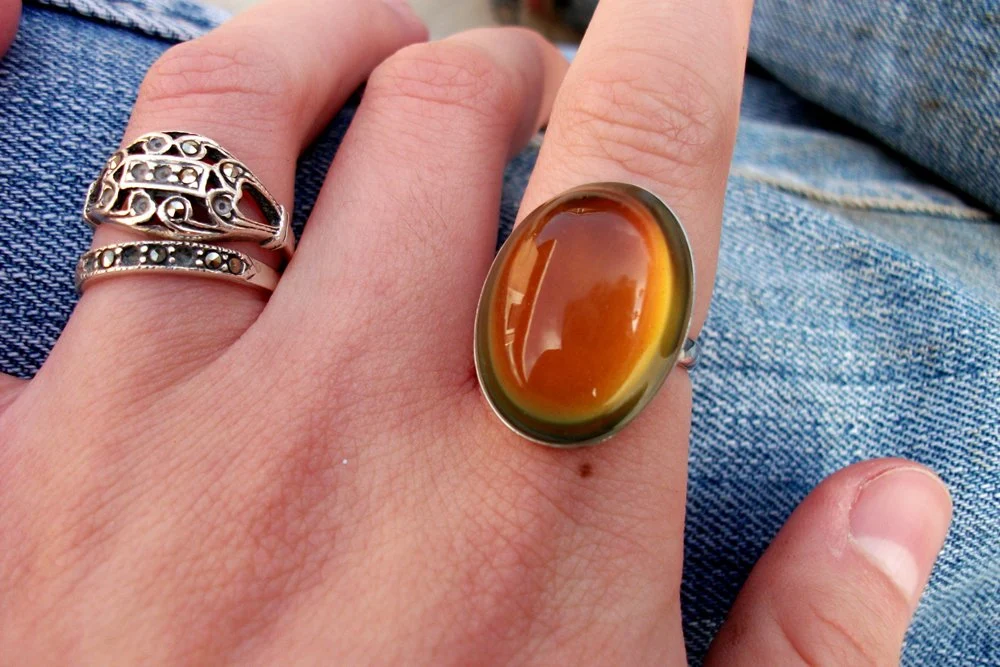Mood Ring
 Photo courtesy of Science ABSOpens in new window
Photo courtesy of Science ABSOpens in new window
Mood rings, introduced in the early 1970s, are rings containing liquid crystals that change color. The color of the ring was supposed to indicate the emotional state, or mood, of the ring’s wearer. |
Mood rings cannot actually reflect emotions; they change color depending on the wearer’s peripheral skin temperature. Warm skin temperatures produce brighter colors, presumably indicating a happy mood, while cold temperatures produce darker colors, presumably indicating a darker mood.
Mood rings are calibrated to have a blue or green color at the average person’s resting peripheral skin temperature (about 82 degrees Fahrenheit or 28 degrees Celsius).
Peripheral skin temperature tends to increase with passion or happiness, causing the ring color to move toward blue or violet.
Stress may result in decreased skin temperature, twisting the liquid crystals in the other direction, resulting in a yellower color.
According to information provided with the mood ring, colors were said to indicate the following moods:
- Violet blue (happy, romantic)
- Blue (calm, relaxed)
- Green (average, not much going on)
- Yellow/amber (tense, excited)
- Brown/gray (anxious, nervous)
- Black (depressed, down).
In cold weather, or if the mood ring is damaged, the color will turn black (Berg, 2002).
While the mood ring’s popularity died out in the middle to late 1970s, offshoots of it appear from time to time. Currently available are the Shoji mood lamp, said to assess the mood of an entire room by gathering data about temperature, humidity, and people’s movement in the room. The mood phoneOpens in new window changes color and brightness based on analysis of voice patterns and tones.
The mood phoneOpens in new window was designed to improve social interactions, especially for people with autistic spectrum disorders such as Asperger’s syndrome. Mood artwork, created by researchers at the Bottom University and the University of Bath, is displayed on a video screen that alters the artwork’s color and brush strokes based on changes in a veiwer’s facial expressions (Stanton, 2007).
See also:
- Berg, T. (2002). Mood rings. In Bowling, Beatniks, and bell bottoms: Pop culture of 20th century America (pp. 958 – 959). n.p.: Gale/Cengage Learning.
- Duke University. (2006, January 1). Mood phone concept wins Motorola competition. [News release] Retrieved from http://www.pratt.duke.edu/news/?id-520
- Stanton, D. (2007). Mood ring reincarnated. Psychology Today, 40, 19.

